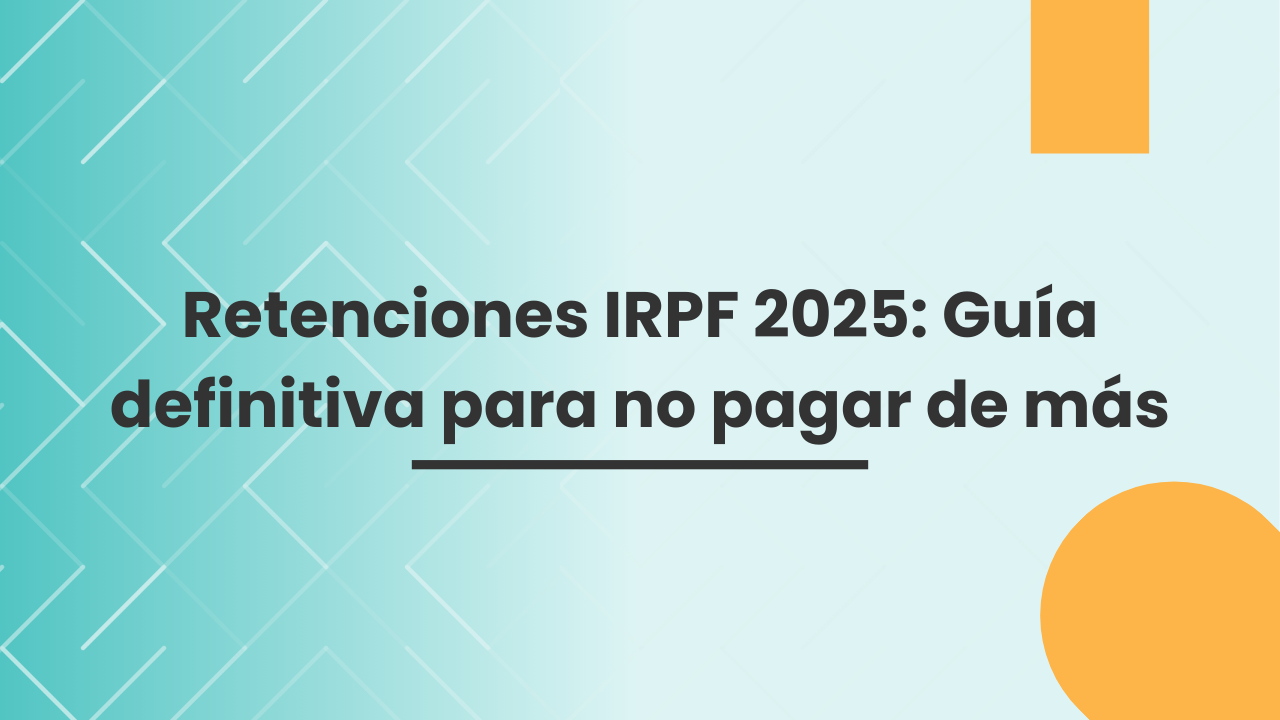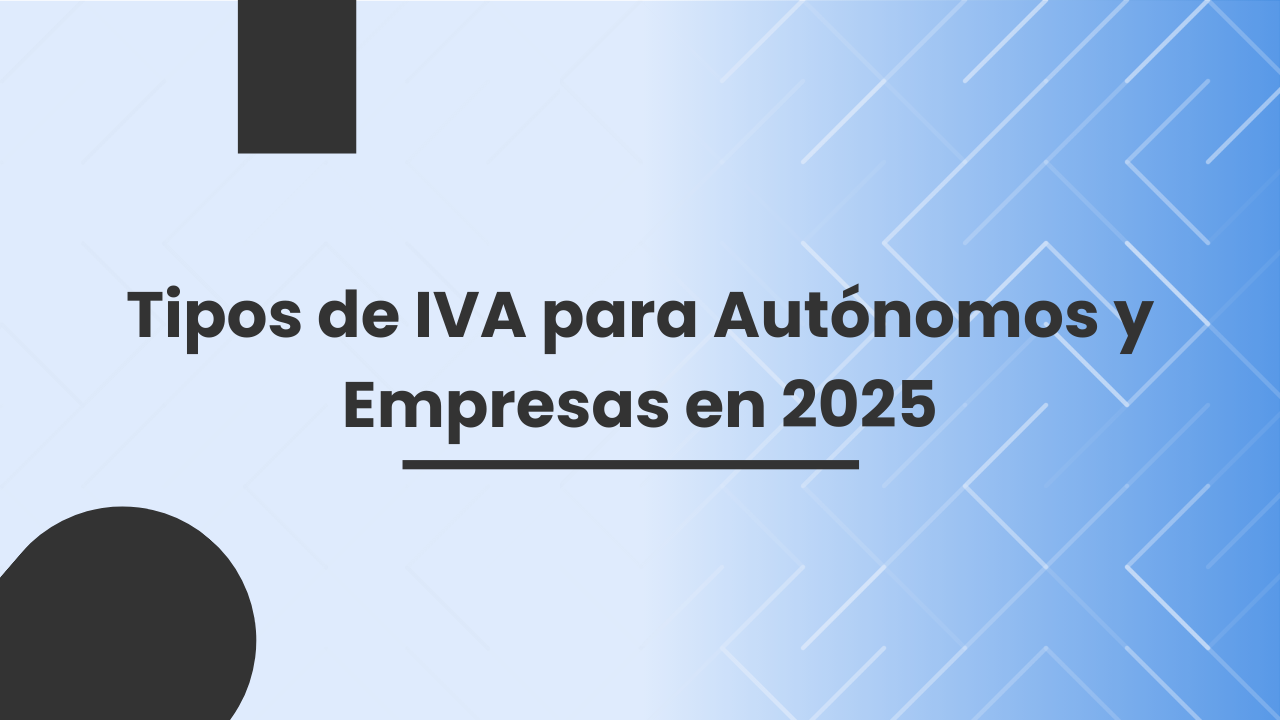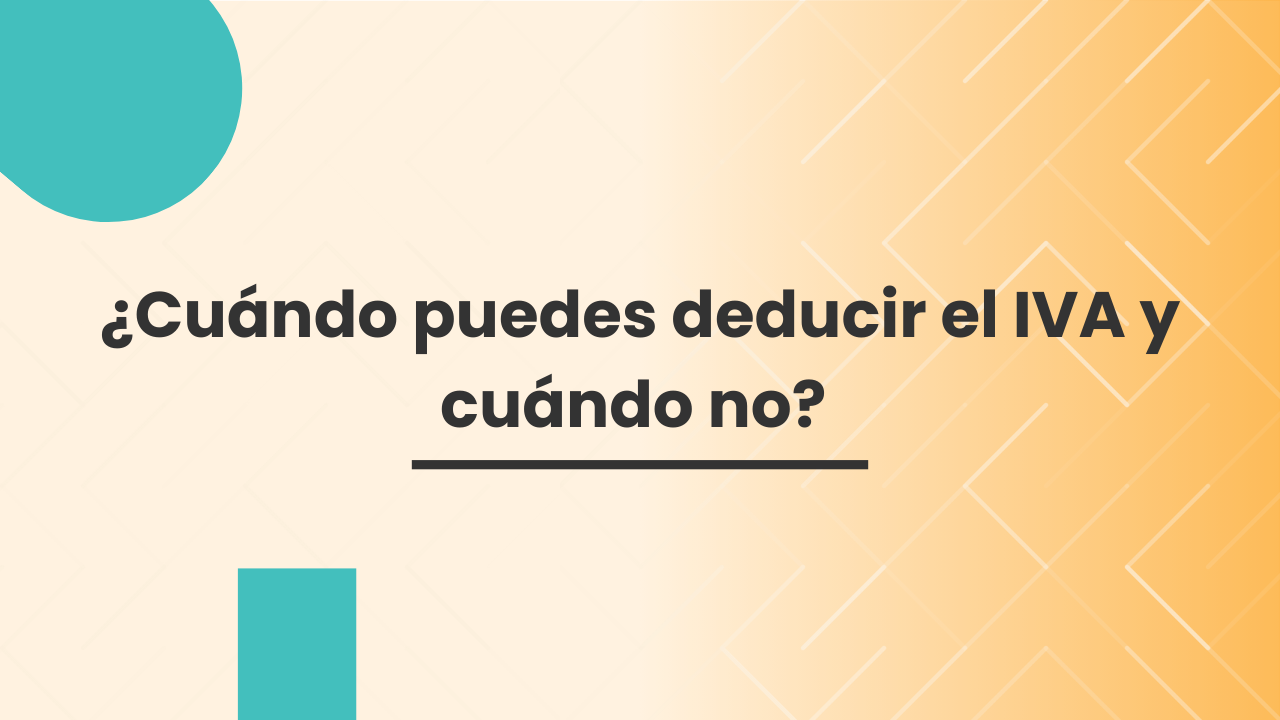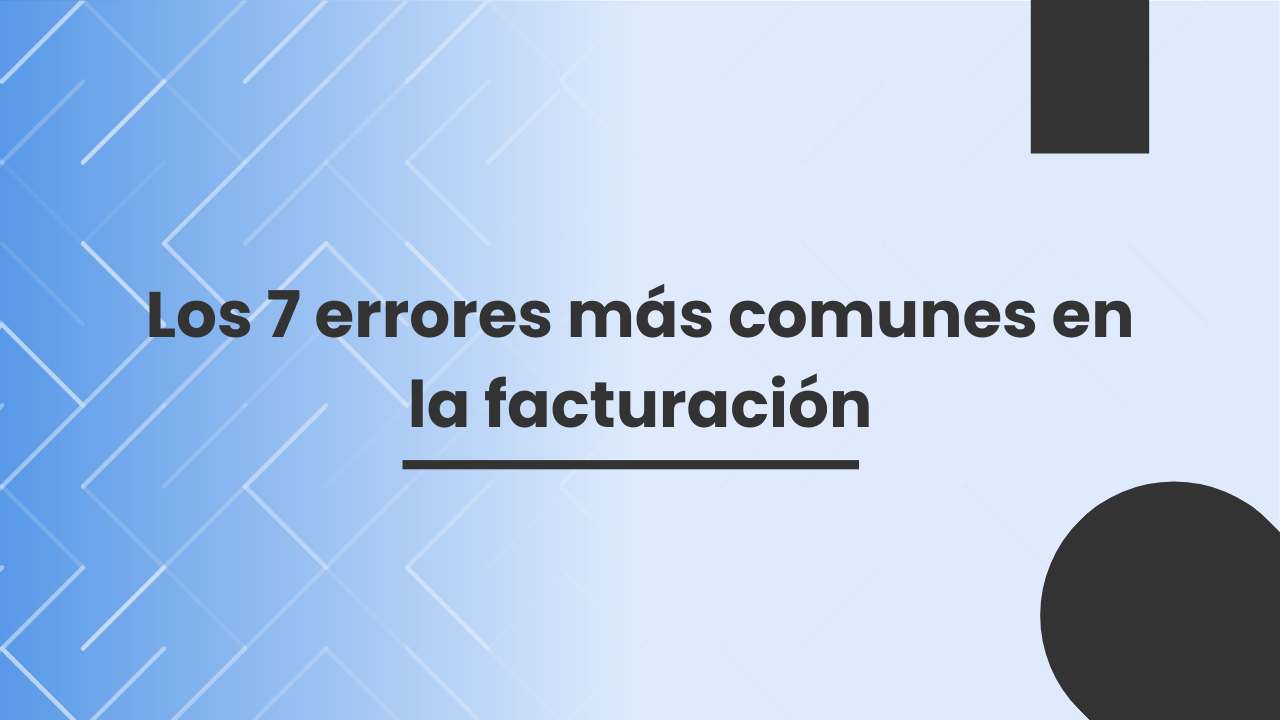Personal Income Tax Withholdings 2025: The Definitive Guide to Avoiding Overpaying

Content:
Did you know that 7 out of 10 self-employed people pay more taxes than necessary because they don't know how personal income tax withholdings work?
The difference can add up to thousands of euros a year. In this article, we explain everything you need to know to optimize your tax situation in 2025.
What exactly are personal income tax withholdings and why should you care?
Personal income tax withholdings are amounts of money advanced to the Treasury against the expected result of your annual income tax return. It's as if you were paying your income tax in installments, even before you know how much you'll ultimately owe.
These withholdings are not optional: they are regulated by Law 35/2006, of November 28, on Personal Income Tax, and its Regulations (Royal Decree 439/2007), which establish the percentages applicable in each case.
The most important thing to understand is that the person responsible for entering the withholdings into the Treasury is the payer, not you . For example:
Companies withhold part of their workers' salaries
Professional clients retain a percentage of your invoices (if you are self-employed)
Tenants retain part of the rent (in commercial premises)
Banks retain a percentage of your interest.
If too much has been withheld during the year, your tax return will require a refund. If the withholdings were insufficient, you'll have to pay the difference. That's why it's important to be familiar with this mechanism.
Withholdings affecting the self-employed: what no one tells you
If you are self-employed, personal income tax withholdings affect you in two fundamental ways:
On your own invoices: If you carry out professional activities, you must include withholdings on the invoices you issue to clients who are companies, other self-employed individuals, or government agencies.
As a withholding agent: If you have employees, hire other freelancers, or rent a space, you will be the one responsible for withholding and paying it to the Treasury.
1. Withholdings on invoices issued as a self-employed person
Not all self-employed individuals are required to withhold taxes. It depends on the type of activity they carry out:
Professional activities (Second Section of the IAE)
General rate: 15% in 2025
New self-employed workers: 7% during the start year and the following two years
Special activities at 7%: municipal collectors, insurance brokers who use external auxiliary services, and commercial delegates of SELAE
Art and Culture Professionals (New from 2023!)
A reduced rate of 7% applies to professionals registered in:
Group 85 of the IAE (Entertainment Professionals)
Group 86 (Liberal, artistic and literary professions)
Groups 01 (cinema, theater and circus), 02 (dance), 03 (music) and 05 (bullfighting) of the third section of the IAE.
This reduction, introduced through Law 31/2022 on the General State Budget, represents significant tax relief for the cultural sector.
Specific activities with reduced rates
Activities in specific modules: 1% (see the list of activities required to practice retention)
Pig fattening and poultry farming activities: 1%
Agricultural and other livestock activities: 2%
Forestry activities: 2%
IMPORTANT: Self-employed individuals registered as business owners (Section One of the IAE) should NOT include withholdings on their invoices. This is a common mistake that can cause problems with the Treasury.
2. Withholdings you should make to others
To your workers
The percentage depends on the salary and personal circumstances:
Family status (married, number of children)
Existence of mortgage
Type of contract
Other personal factors
The employee must provide this information to you using Form 145. To calculate the exact withholding, you can use the help program on the Tax Agency's website .
Special case: company administrators
If the company invoices less than €100,000: 19%
If you invoice more than €100,000: 35%
In rentals of premises or offices
If you rent a business premises, you must withhold 19% of the rent in 2025. This obligation persists even if the receipt doesn't reflect the withholding, unless the owner can justify being exempt.
Other less common withholdings
Dividends: 19%
Lease of movable property, businesses or mines: 19%
Intellectual property: 15% (7% for multi-year copyright advances)
Assignment of image rights: 24%
The models you can't forget (or you'll be fined)
If you make withholdings, you are required to submit the following forms:
Form 111: Withholdings for workers and professionals
Periodicity: Quarterly
1T: until April 20
2T: until July 20
3T: until October 20
4T: until January 20 of the following year
Annual Summary: Form 190 (deadline: January 31)
In this model you must indicate:
Number of recipients (box 1)
Amount of perceptions (taxable base)
Withholdings made
Form 115: Withholdings for rentals
Same deadlines as model 111.
Annual Summary: Form 180 (until January 31)
You must record:
Number of taxpayers (box 1)
Withholding base (rental amount without VAT)
Withholdings made (boxes 3 and 5)
The Form 130 dilemma: Do I have to file it if I'm already having tax withheld from my invoices?
This is probably the most common question among novice freelancers. The answer is: it depends .
When you do NOT have to submit form 130
You are exempt if:
Performs professional activities (Second Section of the IAE)
More than 70% of your income comes from invoices with retention
This is one of the great "tax hacks" that few self-employed people know about. If most of your clients are companies or entities that withhold taxes, you'll avoid having to file Form 130 every quarter.
When you MUST file Form 130
You are obliged in these cases:
If you carry out business activities (First Section of the IAE), regardless of who you invoice
If you are a professional (Section Two) but more than 30% of your income comes from individuals or foreign clients (who do not withhold taxes)
Model 130 involves:
Declare income and expenses quarterly
Pay 20% on net income
Submit it in January (1-30), April, July and October (1-20)
Are you paying the Treasury in advance using Form 130? Yes. These are payments on account of your annual personal income tax, which will then be deducted from your tax return and may result in a credit balance that the Treasury will refund to you.
Frequently asked questions about personal income tax withholdings
What happens if a client doesn't withhold money when it's required?
The person responsible to the Treasury is the customer. However, it's a good idea to record this information to avoid problems. Your obligation is to issue the invoice correctly, indicating "Personal Income Tax Withholding: X%."
Can I choose to have more withheld to ensure a refund?
No. The percentages are set by law and cannot be changed voluntarily.
What if all my clients are individuals?
Since no withholdings are made, you will be required to submit Form 130 quarterly.
Do withholdings mean paying more taxes?
No. They are simply an advance payment mechanism. The final amount of personal income tax will depend on your income, expenses, and personal circumstances, not on the withholdings made.
Take advantage of tax knowledge to optimize your situation
As you've seen, understanding how personal income tax withholdings work can lead to considerable savings, both in money and administrative tasks.
If you're a self-employed professional and can ensure that more than 70% of your clients are companies or entities that withhold taxes, you'll avoid filing Form 130.
On the other hand, if you're a business owner (section one of the IAE), you'll still have to file Form 130, but at least your clients won't withhold your taxes from their invoices, which will improve your short-term liquidity.
Remember that tax regulations change frequently. To stay informed and avoid mistakes, we recommend consulting with a good advisor.
At InnoTaxes, we stay in touch with the tax agency's website to keep our clients up to date with any changes and save them time, because our priority is to make things easier for them so they can continue to grow .
If you want to stay up-to-date and receive effective advice, book your free, no-obligation consultation .


